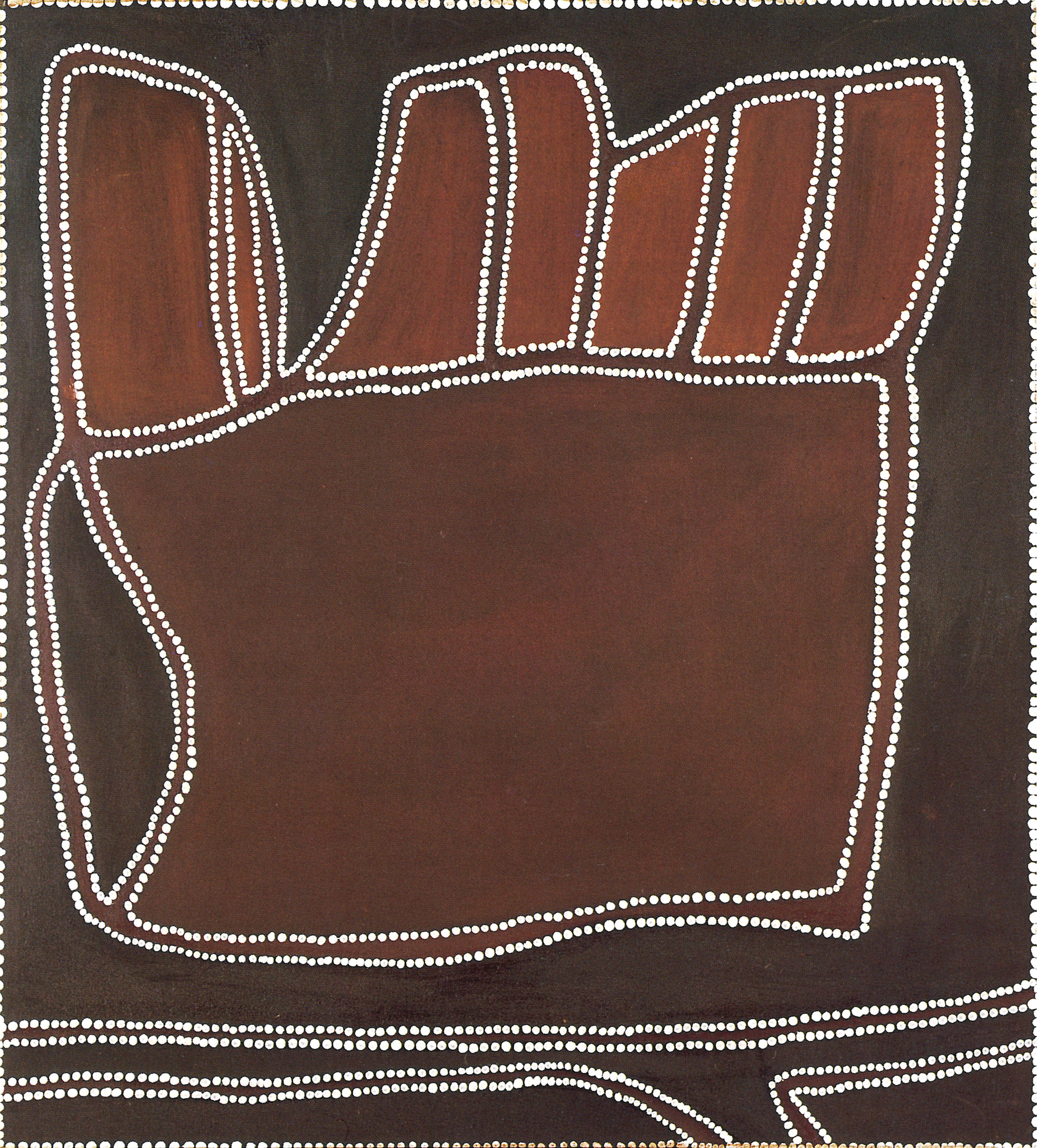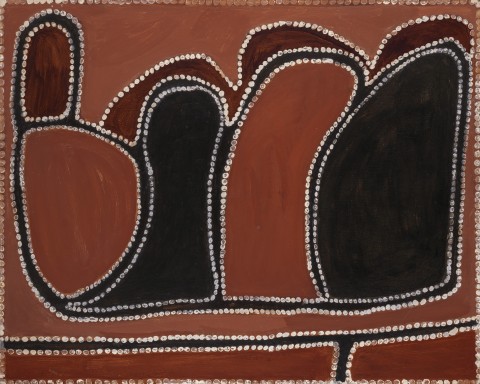UNTITLED, c.1986
ROVER THOMAS (JOOLAMA)
natural earth pigments and natural binder on plywood
80.0 x 100.0 cm
bears inscription verso: Rover Thomas. / Waringarri. Aboriginal. Arts / S-500 / P829 /AFJ
bears inscription on label on frame: 17
Waringarri Aboriginal Arts, Kununurra, Western Australia
Aboriginal Arts Australia Limited, Sydney
Private collection, France, acquired from the above in June 1990
Rover-example.jpg

Rover Thomas’s practice of rendering sites, stories and landscapes of the eastern Kimberley in a planar, map-like perspective was a radical innovation and one which created an entirely original mode of depicting the land, redefining the conceptual framework by which Aboriginal art was judged. This form of landscape painting, with the elements of each work referring to sites of ancestral or historical significance, and routes travelled by both the creator beings and the artist himself in his days as a drover on cattle stations in the region, became the basis of the style now recognised as the East Kimberley or Warmun School of Australian art.
Rover Thomas moved to Turkey Creek (Warmun) in early 1975. A government reserve, Warmun had previously been a rations depot and apart from a post office had few other facilities or amenities. Here, Indigenous workers displaced from the cattle stations found a place of refuge and for Rover Thomas, Paddy Tjamatji and other artists, Warmun also provided the background for their creative output, as the place where the Kuirr Kuirr song cycle first emerged and where the ensuing art movement flourished.
Painted for Waringarri Aboriginal Arts in Kununurra, Untitled, 1986 is characteristic of Rover’s early paintings where layers of traditional pigments affixed with natural resin binders are outlined by a tracery of white dots painted with huntite, a white chalky pigment used in ceremony and rock art. The work shows a planar view of landscape where lines indicate geological features, while at the same time recalling ancestral paths and delineating areas of country.
Rover Thomas was widely recognised as a significant Australian artist by the late 1980s, participating in group exhibitions throughout Australia every year from 1987 until his death in 1998. In 1990 he was awarded the John McCaughey Prize and was one of the first two Aboriginal artists (together with Trevor Nickolls), to represent Australia at the Venice Biennale. In his tribute to Rover Thomas, Kim Akerman noted that, ‘as an artist he took the experiences of a rich and varied life and, drawing on the cosmological and historical references that so vividly underpin the lives of Aboriginal peoples throughout Australia, presented us all with a new and profound view of the land we occupy’.1
1. Akerman, K., ‘Rover Thomas; A Tribute’, ARTLINK, issue 20:1, March 2000, p. 22 – 23
CRISPIN GUTTERIDGE
